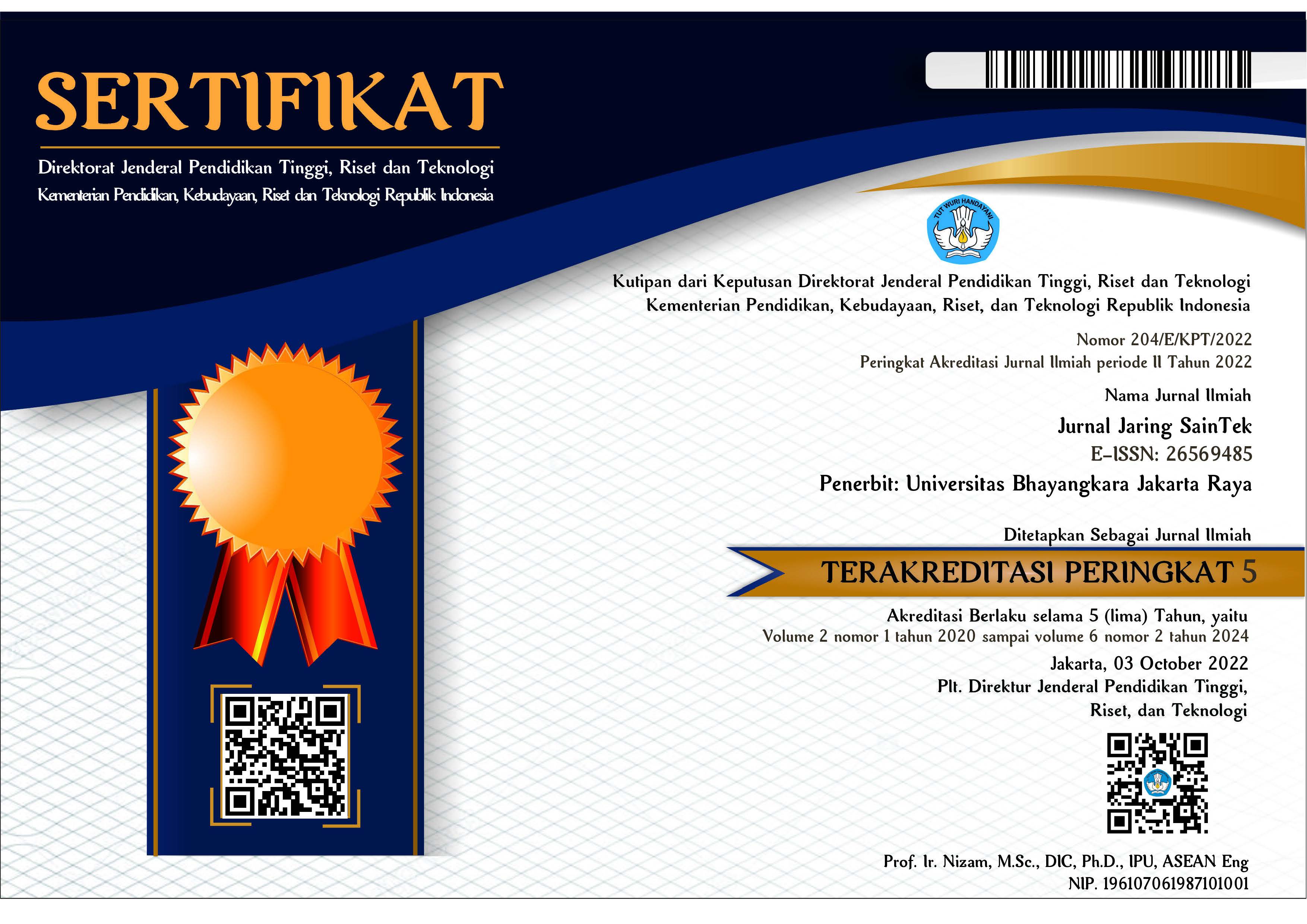Rancang Bangung Aplikasi Alumni Berbasis Web Studi Kasus pada SDN Bungur 03 Jakarta Pusat
DOI:
https://doi.org/10.31599/4v7s6m81Keywords:
PHP, Alumni Information System, UML Unifed Modeling Language (UML), SDN Bungur 03, Web.Abstract
SDN Bungur 03 is a public elementary school in Jakarta, precisely in Central Jakarta, where there is a section that takes care of graduates or alumni of the school, namely administrators who are in charge of recording data on graduates or alumni of this school. The process has several problems, namely the data collection process for graduates or alumni who still use paper as an alumni data file, and in the data collection process alumni still have to come directly to the school to fill in the alumni data where the alumni are already busy with activities at school. campus or at work that does not allow alumni to fill in or update alumni data at school. In defining the needs and analysis and system design for the company, data collection methods are needed by means of literature study, observation, interviews, design, and testing. For the method of analysis and the concept of information systems, the unifeld modeling language (UML) model is used. The results of this thesis writing will build a web-based information system which is expected to be able to deal with the problems that exist on the school side and the alumni. This skill information system that is owned by every human being is made using the PHP programming language, MySQL database. With the alumni information system at Bungur 03 Elementary School, it can handle complaints experienced by the school and alumni in the running system process. For example, there is an alumni data collection report and an alumni data form in the form of forms, thereby reducing the use of paper on the forms and attached files.
Downloads
References
Almanfaluthi, R. (2009). Alumni atau Alumnus.https://www.bahasakita.com/id/bahas-bahasa/alumni-atau-alumnus/. Diakses 11 Oktober 2020.
Chang, R., Mu, X., & Zhang, L. (2011). Software defect prediction using Non-Negative Matrix Factorization. Journal of Software, 6 (11 SPEC. ISSUE), 2114–2120. doi:10.4304/jsw.6.11.2114-2120.
Chiş, M. (2008). Evolutionary Decision Trees and Software Metrics for Module Defects Identification. Program, 2(2), 25–29.
Difia, A. (2020). Perancangan Sistem Informasi Jasa Wedding Organizer pada CV. Boganesia Jaya Berbasis Web. Jurnal Jaring Saintek. 2(2). 15 – 24 http://ejurnal.ubharajaya.ac.id/index.php/jaring-saintek/article/view/315.
Fakhrahmad, S. M., & Sami, A. (2009). Effective Estimation of Modules’ Metrics in Software Defect Prediction. World Congress on Engineering, I, 206–211.
Firdaus, A. (2019), Analisis Business Intelligence pada Pengelolaan Data Alumni: http://generic.ilkom.unsri.ac.id/index.php/generic/article/view/46/44
Irianto, H. A. (2010). Statistik Konsep Dasar, Aplikasi dan Pengembangannya. Edisi keempat. Jakarta: Perenadamedia.
Firdaus, M. A. (2020), Analisis Business Intelligence pada Pengelolaan Data Alumni: https://sinta.ristekbrin.go.id/journals/detail?q=alumni&search=1&id=4171.
Rano, A. (2020). Sistem Informasi Penelitian dan Pengabdian Masyarakat di Universitas Mohammad Husni Thamrin. Jurnal Jaring Saintek. 2(1). 1 - 12 http://ejurnal.ubharajaya.ac.id/index.php/jaring-saintek/article/view/61.
Rusmawan. (2020). Sistem Informasi Anggaran Pada PT. Ardhi Karya Teknik, Jurnal Jaring Saintek. 3(2)









